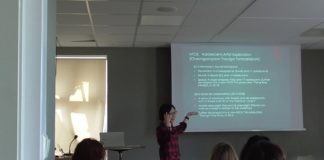As part of ASSITEJ’s Cradle of Creativity, I was lucky enough to see performances Khokho’s Treasure and Dear Mr Government, Please May I Have A Meeting With You Even Though I’m Six Years Old? These two very different productions had a shared focus on Culture and both were incredibly well received.
Khokho’s Treasure, by the South African National Children’s Theatre (Dir. Francois Theron), is a cheerful piece of Musical Theatre – atmospheric, energetic and full of colourful costumes, lighting effects and movement. It uses a brilliant variety of stories, songs, games and dance to beautifully narrate the legacy of South African Culture through the inheritance a grandfather leaves to his grandchildren (‘Khokho’ means grandfather in isiZulu). The Actors brought several, suitably thrilled, children from the audience on to the stage to play and dance with them. Suddenly the young Audience was not only watching the Play but also participating in it, and the friends and classmates of those onstage became extremely enthusiastic.
Dear Mr Government, Please May I Have A Meeting With You Even Though I’m Six Years Old?, produced by Umthunzi Holdings & The University of Johannesburg (Dir. Jessica Lejowa), is the product of a series of research-based workshops with children that captured their ideas, perceptions and stories about their own lives. It is a cross-border collaboration between the Director in Lesotho and the Performer-Researchers, Cheraé Halley and Bongile Lecoge-Zulu, in South Africa. Unlike Khokho’s Treasure, which portrays Cultural Treasures that are very specific to South Africa, the narrative of Dear Mr Government… is less contextually-bound to a specific location, despite the children involved being from Lesotho and South Africa. Speaking to the heart of many diverse communities that have suffered or are suffering from war, poverty and/or inequality, Dear Mr Government.. uses a simple set on a tiny stage. Utilising everyday objects for props, an audio soundtrack helped guide the narrative, whilst the two Performers changed the scenery by drawing with chalk all over the stage.
Despite being very different from one another, both productions explored the Cultural Legacies inherited by young people in very dramatic and effective ways.















